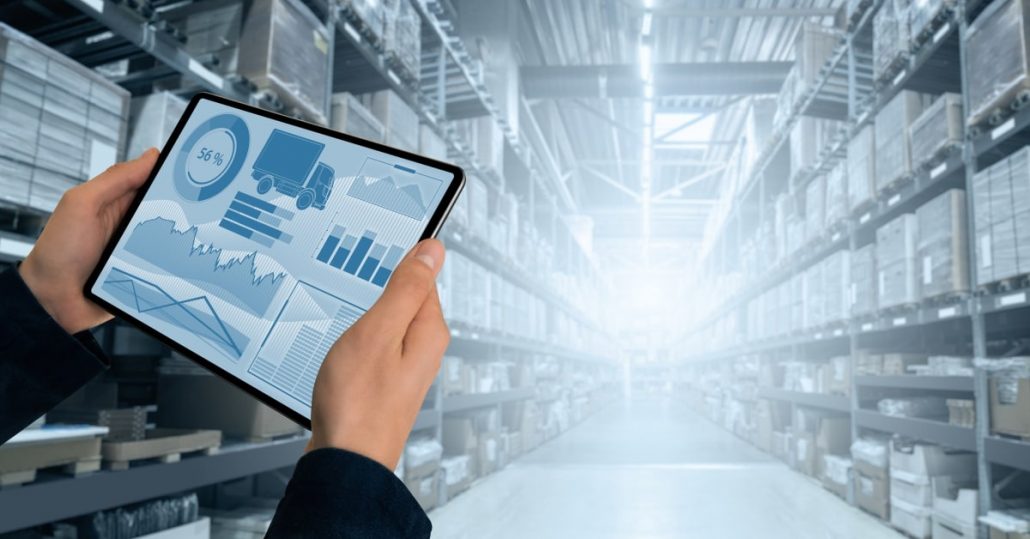February 4, 2025 - 6 minutes read

How Supply Chain Control Tower Can Boost Performance
In today’s volatile and uncertain business climate, supply chain visibility is central to maintaining control over complex global networks. At the same time, supply chains are becoming more fragmented, making it increasingly difficult to detect emerging risks, control costs, and establish efficient operational processes. Data is key to overcoming these challenges, yet data itself presents its own challenges.
According to recent research, 80% of companies are expected to incur significant losses due to a failure to merge their digital supply chain and control tower initiatives in the year ahead. This underscores the urgency for solutions that bring all transactional data into a single, connected environment where every stakeholder works from the same source of truth.
Modern control tower technology makes this possible, delivering a unified operating view that strengthens oversight and enables faster, more informed decisions at every stage of the supply chain.
What Is a Supply Chain Control Tower?
A supply chain control tower is an integrated software platform that consolidates operational data from across the supply chain—linking ERP, WMS, and TMS systems with suppliers, 3PLs, carriers, and customers. By merging these inputs into a centralized platform, control towers provide a comprehensive view of inbound freight and outbound shipments from origin through final delivery.
Modern platforms use advanced technologies like artificial intelligence, machine learning, predictive analytics, and IoT data streams to deliver deeper insight and faster, more accurate decision-making. These capabilities support real-time exception management and enable proactive responses to risks and disruptions.
New control tower technology also enhances OTIF (On Time In Full) performance by turning raw data into actionable insight. By consolidating operational data across suppliers, carriers, and customers, control towers can monitor delivery schedules in real time and flag potential delays before they affect commitments. This improves OTIF reliability, aligns production with actual demand, and improves customer satisfaction.
Some supply chain control tower solutions also merge existing historical data with digital twins, enabling scenario modeling to evaluate potential actions before they are executed. By combining enhanced visibility with advanced analytics and predictive modeling, control towers help organizations move faster, operate more efficiently, and collaborate more effectively across their supply chain networks.
Capabilities of Modern Supply Chain Control Tower Platforms
Control towers combine advanced technology with a centralized operating model to deliver full-spectrum visibility and enable better supply chain agility. They integrate data, analytics, and automation into a single platform, enabling better decision-making across the entire partner network. While specific configurations vary, most modern solutions share several core capabilities:
- Technology integration – Connects ERP, WMS, TMS, and other supply chain management tools with supplier, carrier, and customer data streams. Incorporates AI, machine learning, and IoT sensor inputs to compare planned activity against real-time shipment information.
- Centralized data environment – Harmonizes disparate data sources into a unified platform. This single source of truth eliminates blind spots, reduces duplication, and ensures all stakeholders have access to the same information.
- Collaborative workflow tools – Supports shared visibility so internal teams, suppliers, logistics partners, and customers can coordinate activities in real time, reducing delays and communication gaps.
- Predictive monitoring and automation – Uses advanced analytics to identify potential disruptions and trigger automated workflows for faster resolution.
These capabilities work together to give organizations a clearer view of supply chain functions and the ability to act on that information with precision.
Benefits of Implementing Control Tower Technology
When strategically implemented, supply chain control tower software helps shift logistics operations from problem-solving to performance management. Its capabilities improve shipment execution and reduce risk, enabling substantial improvements across multiple areas of the supply chain:
Cost Efficiency and Margin Improvement
A control tower reduces avoidable costs by exposing inefficiencies that are often hidden in fragmented systems, including unnecessary expediting, poor contract management, or underutilized consolidation opportunities. With a clearer view of inventory positions and supplier performance, organizations can make smart, intentional adjustments that protect margins without sacrificing service quality.
Workflow Automation
Replacing manual shipment tracking and exception handling with automated workflows removes lag time from daily operations and gives teams time to focus on revenue-generating tasks. Digital supply chain control towers use defined business rules and AI pattern recognition to detect disruptions, reroute orders, or trigger replenishment in real time, keeping freight and materials moving without unnecessary human intervention.
Data-driven Predictability
Control towers continuously collect transactional logistics data, feed it into forecasting models, and refine those models as new conditions emerge. This enables better alignment of production schedules with actual needs and earlier identification of trends that could affect inventory or transportation availability.
Transparent Stakeholder Relationships
When every party in the supply chain operates from the same verified data set, there’s less room for miscommunication or disputes over shipment status. The supply chain control tower model establishes a shared truth, giving suppliers, carriers, and customers the context they need to coordinate effectively and adjust plans in real time.
Risk and Exception Management
Control towers provide the ability to identify vulnerabilities early and respond before they escalate into major disruptions. Automated monitoring tools flag errors, delays, or potential cyber threats, ensuring risks are managed proactively rather than reactively.
Agistix: Integrated Solutions for Complete Control Tower Functionality
Agistix redefines the supply chain management control tower with a unified platform built around three core solutions. Together, they centralize data, connect stakeholders, and provide actionable insight across every stage of the supply chain.
- Agistix Visibility – Captures shipment and order data from across the network, including third-party and supplier-booked inbound freight. Provides real-time tracking, exception alerts, and historical analytics so every movement—from raw material to final delivery—is visible and verifiable.
- Agistix TMS – Supports multimodal rating, booking, and tendering alongside carrier and cost management. Integrates seamlessly with existing systems to give transportation teams the ability to compare services, optimize mode selection, and manage execution without switching platforms.
- Agistix Microsites – Custom, browser-based portals for suppliers, customers, and internal teams. Enable direct order and shipment submissions, centralized document management, and shared access to real-time status updates, reducing manual touchpoints and miscommunication.
By combining these capabilities, Agistix delivers the full scope of supply chain control tower benefits—end-to-end visibility, operational control, predictive insight, and seamless collaboration—without the disruption of a large-scale system replacement.
Discover how Agistix’s supply chain management system can transform logistics performance. Book a demo to learn more.
Frequently Asked Questions



